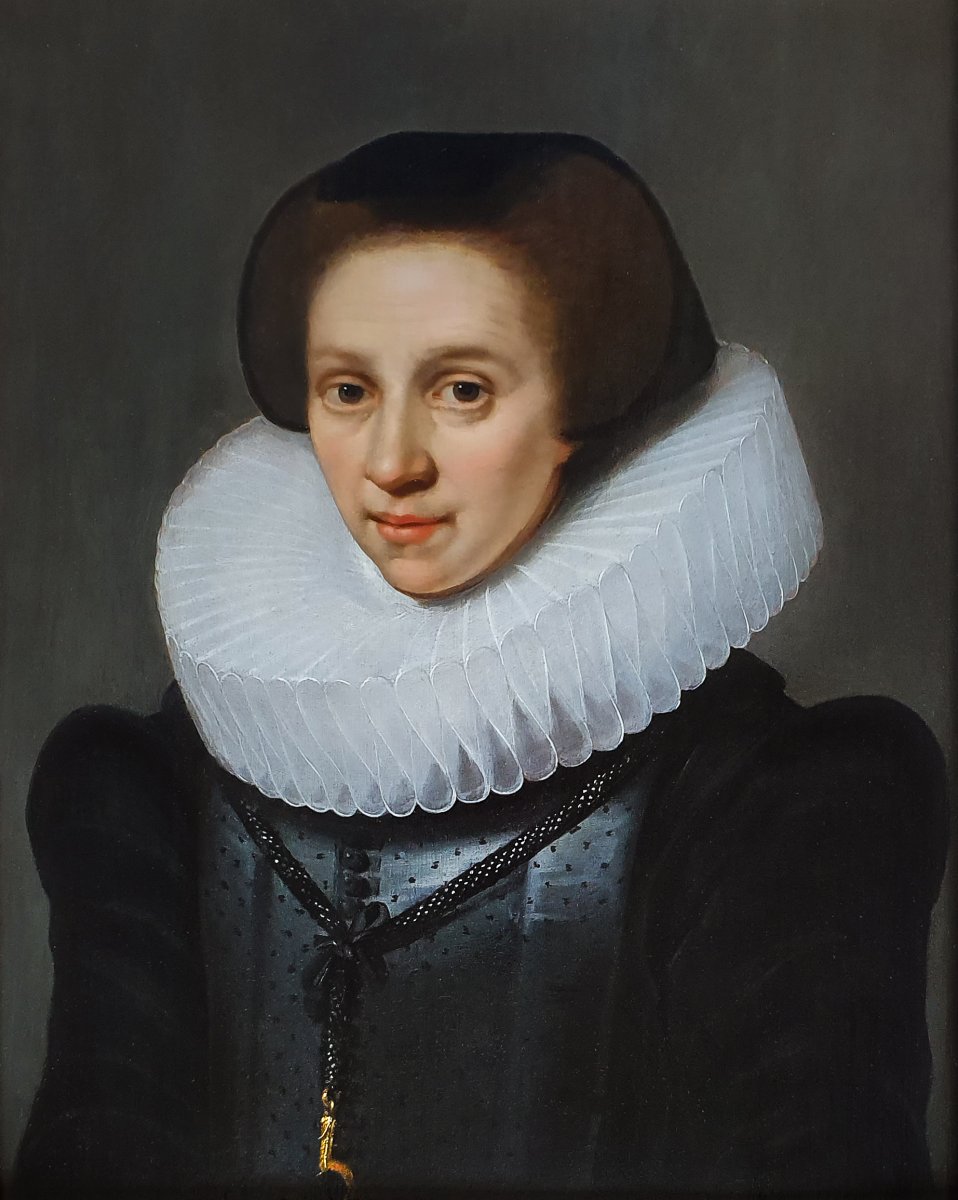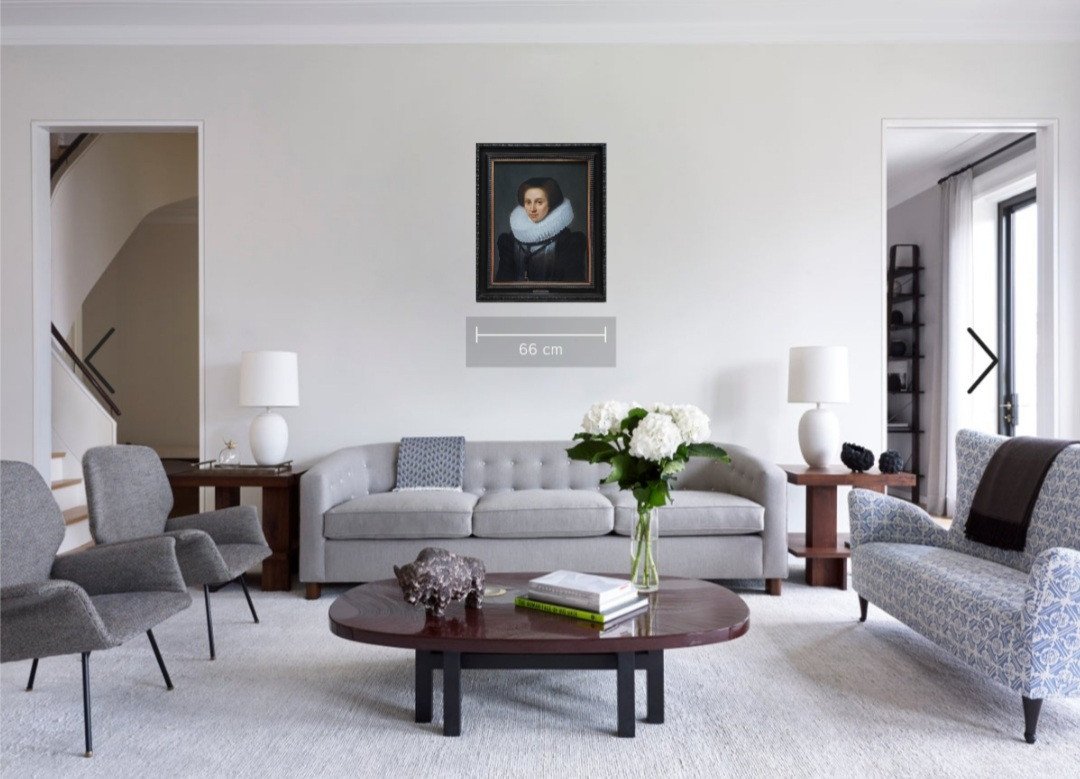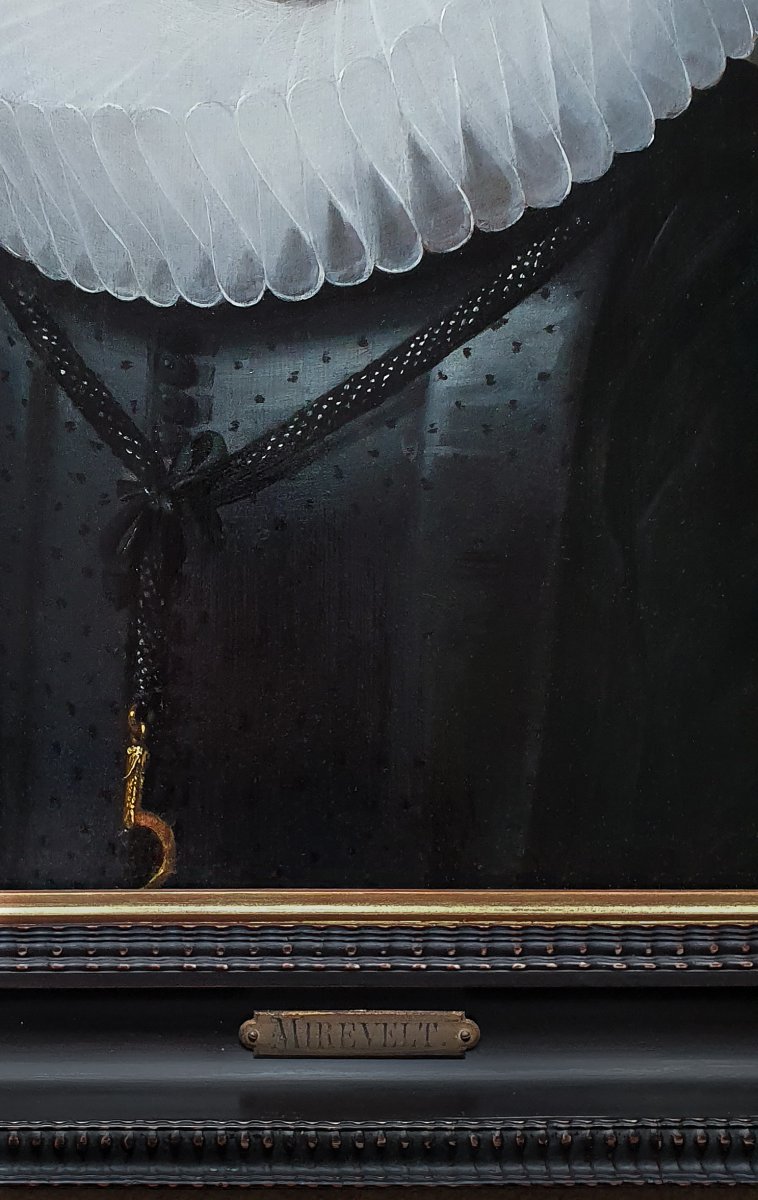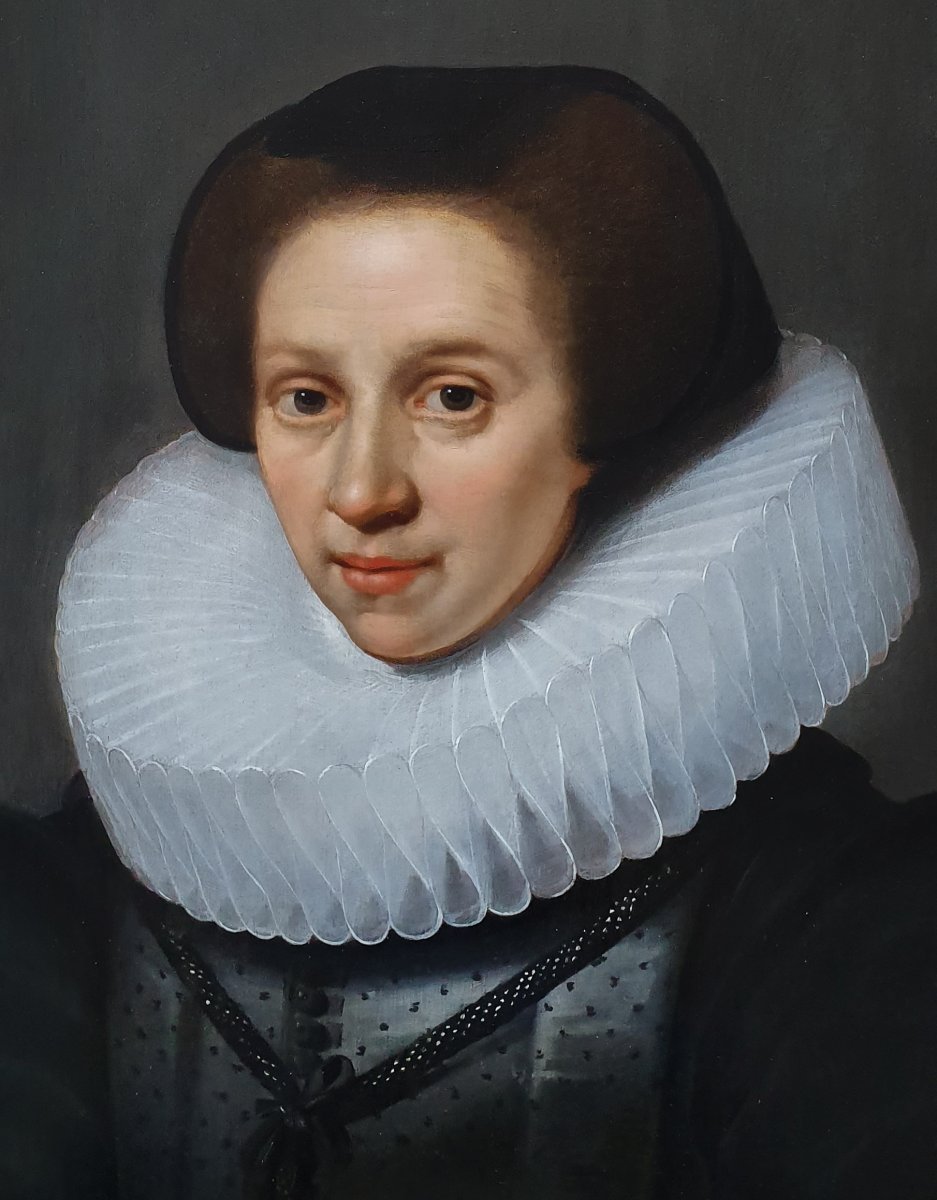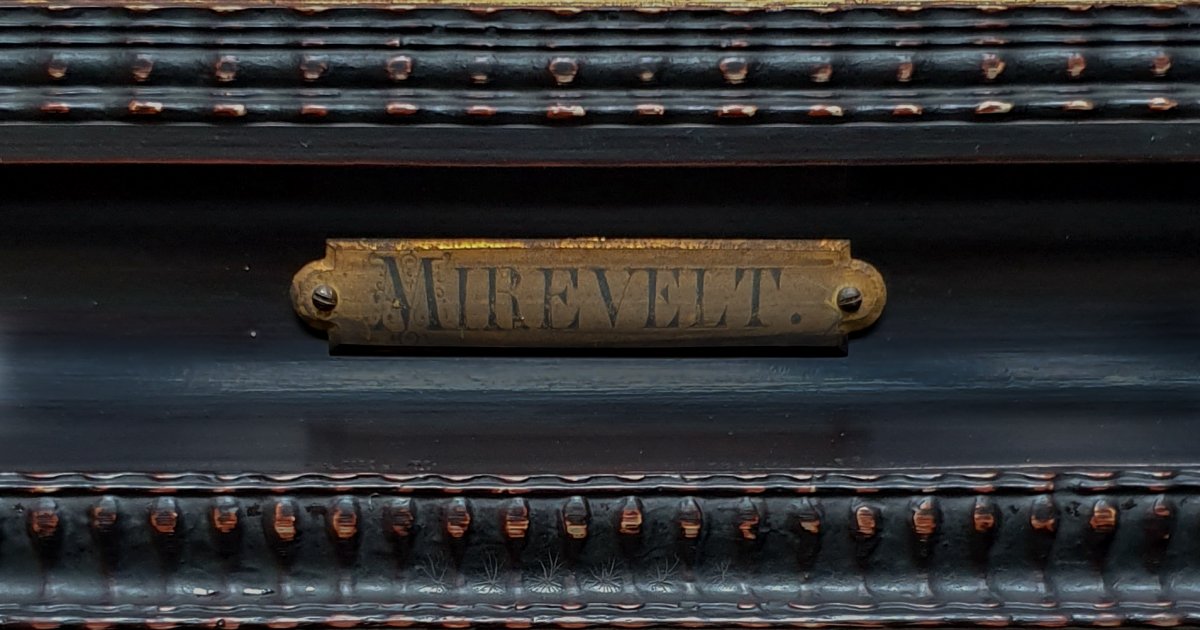"Circa 1620 Portrait Of A Lady; Attributed To Michiel Jansz Van Mierevelt (1567-1641)"
This exquisite oil on panel portrait of a woman, likely a citizen of Delft, is a sublime example of the 17th century Dutch Golden Age portrait. During this period the Dutch mercantile class and magistrates, conscious of outward displays of frivolity and wealth, dressed themselves in black. However, ironically, this was the costliest colour available for dying clothes. Black was far from boring and there were a multitude of difference fabrics and accoutrements during the period. As such artists went to great depths to depict the subtle nuances of the colour and the fabrics and textures and how they reflected the light. This was often carried out to an exactness producing results that were often stupendous. One of the main proponents, and the most fashionable portraitist of the day, was Michiel van Mierevelt, whose work was consistent in quality and in the careful reproduction of faces and the exquisite rendering of costumes and fabrics.In the present example the patron is wearing the style of clothing that was fashionable in Holland around 1620. The sheen and pattern on the silk damask is effortlessly portrayed to give a sense of substance and movement. This type of wide ruff collar, framing her superbly modelled head, was of a type that started small but received an increasing diameter until it finally looked like a millstone, often requiring some 15 meters of linen batiste. It could only be worn once before it lost its shape. These luxurious possessions worn by the wealthy were so valued that they were often listed in inventories of estates. The black cap is a type worn by widows.
The demand for portraits in the Netherlands and England was great in the 17th century and this portrait is a characteristic work by the painter Michiel Jansz van Mierevelt who was both extremely skilled and business minded. He was the most productive and successful portraitist in Delft and apart from the many Dutch patrons, English clientele were also very keen (English armies fought on the side of the Republic and their generals and English diplomats, mostly aristocrats, would sometimes spend years in the Low Countries) and it was not uncommon to order several copies to give to friends, relatives and their children when they setup home for themselves. Mierevelt achieved such success that his studio became one of the largest in operation. In 1607 he was appointed official painter of the Stadholder court of Mauritsz, the Prince of Orange-Nassau, in The Hague. Twice did Van Mierevelt rejected prestigious offers to become court-painter to English rulers (Prince Henry and Charles I) but he was not going to abandon financial stability for a prestigious but uncertain career in a foreign country. The most Prince Henry could extract from him was a promise to come to London for a three-month period but even that came to nothing. Mierevelt had more clientele than he could handle and his winckel was a slick operation capable of a large output with three or four fully trained assistants working with him at any one time, of which many rose to fame, including Paulus Moreelse and Jan Antonisz. Van Ravesteyn.
The Dutch Golden Age of painting was a period in Dutch history, roughly spanning the 17th century, in which Dutch trade, science, military, and art were among the most acclaimed in the world. Dutch explorers charted new territory and settled abroad. Trade by the Dutch East-India Company thrived, and war heroes from the naval battles were decorated and became national heroes. During this time, The Dutch Old Masters began to prevail in the art world, creating a depth of realistic portraits of people and life in the area that has hardly been surpassed. The Golden Age painters depicted the scenes that their discerning new middleclass patrons wanted to see. This new wealth from merchant activities and exploration combined with a lack of church patronage, shifted art subjects away from biblical genres.
Provenance: Private collection France
Measurements: Height 79cm, Width 66cm framed (Height 31”, Width 26” framed)



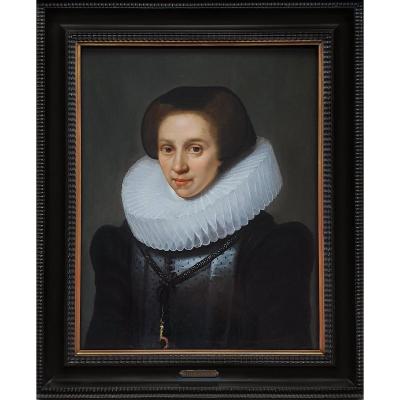
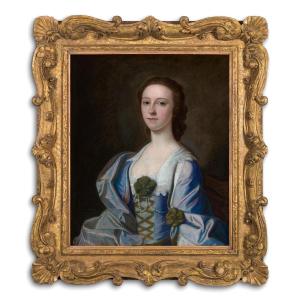
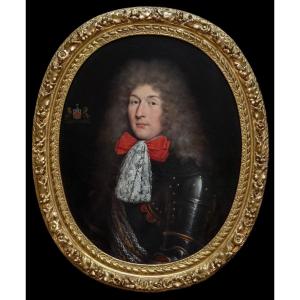




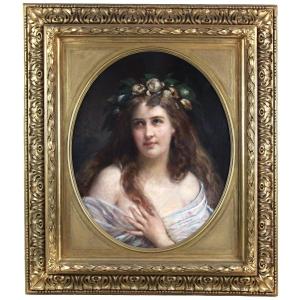

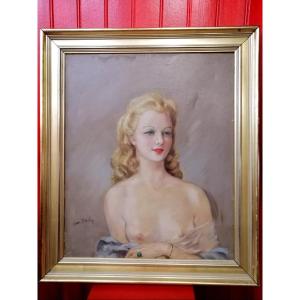
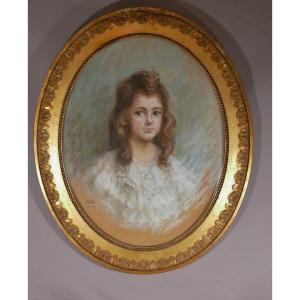

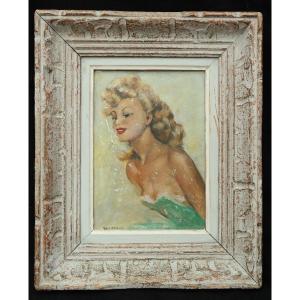




 Le Magazine
Le Magazine Rivista Artiquariato
Rivista Artiquariato TRÉSORS magazine
TRÉSORS magazine

